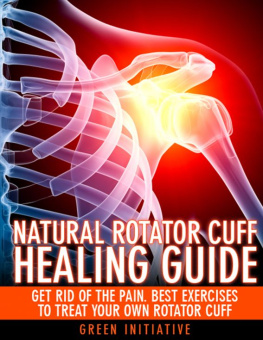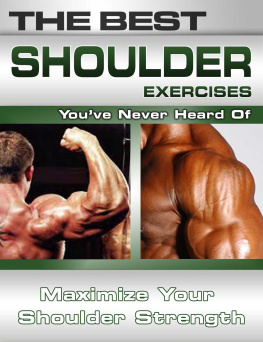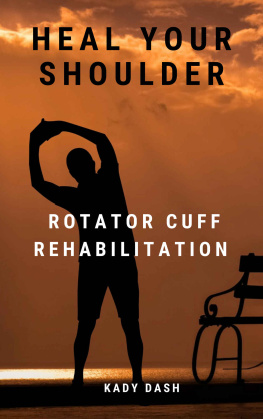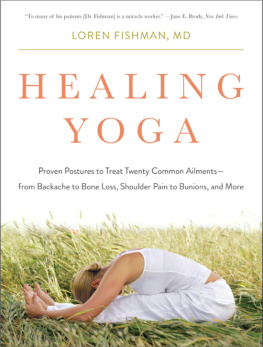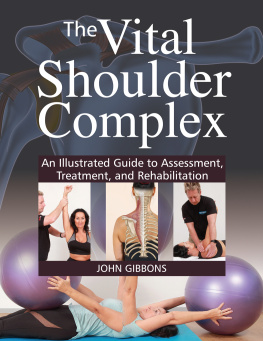SHOULDER PAIN?
THE SOLUTION & PREVENTION
Fourth Edition
Revised & Expanded
BY
JOHN M. KIRSCH, M.D.

www.bookstandpublishing.com
Published by
Bookstand Publishing
Morgan Hill, CA 95037
3056_15
Copyrigh t 2013 by John M. Kirsch, M.D.
All rights reserved. No part of this publication may be reproduced or transmitted in any form or by any means, electronic or mechanical, including photocopy, recording, or any information storage and retrieval system, without permission in writing from the copyright owner.
The chapter "Bar Hanging for Shoulder Health A Consumer Guide to Therapeutic Bar Hanging" is by Roleigh Martin. Copyright 2012 by Roleigh Martin. All rights reserved. No part of that chapter may be reproduced or transmitted in any form or by any means, electronic or mechanical, including photocopy, recording, or any information storage and retrieval system, without permission in writing from the copyright owner.
ISBN 978-1-58909-642-4
First Edition: January 2010
Second Edition February 2011
Third Edition: March 2012
Fourth Edition: January 2013
Printed in the United States of America
Let us affirm what seems to be the truth
Plato, The Republic , Bk VIII
Science is about defining truths about nature, through experiment, or; experience .
Richard Feynman (nuclear physicist,
author , artist and bongo drum musician)

The exercises in this book are simple.
The book is not.
Acknowledgements
With gratitude to my wife Joy for her encouragement and belief in the importance of this book, and to the CT technologists of the Beaver Dam Community Hospital, Beaver Dam, Wisconsin, who taught and guided my studies of the CT scans made for this book.
And to Rick Newcombe, (www.Creators.com) whose story of struggle and success in restoring the health of his shoulder in the summer of 2011 has contributed so much to validate the Kirsch Institute exercise protocol.
And to Roleigh Martin, M.A. who has provided so much help gathering information on alternative equipment and methods for hanging.
And to Matthew Brown, journalist, who so perfectly captured the essence of this book in one single newspaper article in the Portage County Gazette (Wisconsin).
And to Tom Honl DDS who has clarified the link between shoulder pain, sleep apnea and sleep position.
And to all who have validated the Kirsch Institutes exercise protocol by restoring the health of their own shoulders.
Foreword
This is the book that will teach you a new exercise that will remodel your shoulders to prevent pinching and tearing the rotator cuff, relieve stiffness and pain and restore normal flexibility. Along with simple weight lifting, the exercise will heal and maintain the health of your shoulders.
  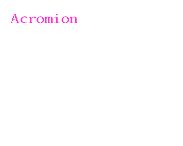 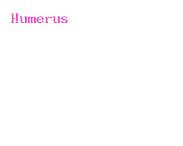 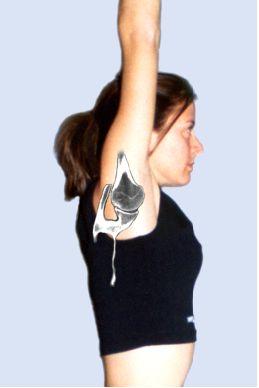
In this figure, notice how the humerus is positioned to lean against the acromion part of the scapula in the hanging position. | The model pictured here and on the cover is hanging from an overhead bar. (See section on Partial Hanging). This is the exercise that will stretch the arch of ligament and bone (the CA arch, or coracoacromial arch) that may cause shoulder pain and rotator cuff injury if not stretched. A CT scan slice image from a live subject made in the simulated hanging position is overlaid on the models shoulder to depict the biomechanics of the exercise. |
Prologue
This Fourth edition of the book Shoulder Pain? The Solution & Prevention. contains the first formal academic study of the Kirsch Institute Protocol that I presented this past March 22-25, 2012 at the 1 st Combined Australian/American meeting of the respective hand & upper extremity surgery societies in Kauai HI. There are fewer testimonials and book reviews in this new edition, but those previously printed are still available at: these websites:
www.amazon.com
www.kirschshoulder.com
For the purpose of understanding why the hanging exercise is so effective, I made CT scans of the shoulder of live subjects, some in the simulated hanging position as well as others in various degrees of arm elevation. These studies present the live shoulder anatomy in 3D video. The videos captured the shoulder both in skeletal and soft tissue formats. The CT scan format allows a far more accurate study of the living body than cadaver studies, as the anatomy remains intact and is indeed, live. Study of these 3D videos will greatly enhance your understanding of shoulder anatomy and the dynamics of the hanging exercise. I have made these videos and many more still images of the shoulder also available on the website www.kirschshoulder.com I strongly recommend that you study the website for the science, testimonials, FAQs, and information about equipment available to assist with the hanging exercise.
This Fourth Edition has Three Aspects:
FACT: Hanging from a bar and light weight lifting
relieves most shoulder pain problems.
THE EXERCISE PROTOCOL: Hanging from an overhead bar and lifting light weights.
THEORY : My theory as to why the exercise protocol works to relieve shoulder pain. This section is optional reading, as it is just my theory as to why the hanging & weight lifting exercises are so successful in relieving shoulder pain.
These aspects are not strict divisions within the book, but are a general outline of the content. There is a necessary flow of information from one section to the other.
The Fact & the Study
FACT: The Protocol Works
In March 2012 I presented the first formal academic study of the Kirsch Institute exercise protocol at the 1 st Combined Australian/American meeting of the respective hand & upper extremity societies on the island of Kauai HI.
The study included 92 carefully followed subjects with shoulder pain problems who used the Kirsch Institute for Shoulder Research exercise protocol to overcome their shoulder pain.
The majority of these subjects had been suffering with shoulder pain for many years and had tried many other methods of treatment at great expense with no relief. Most of these subjects were scheduled for, or advised to have shoulder surgery.
The Kauai Study
The subjects in the study had the following diagnoses:
SIS (subacromial impingement syndrome: 70
RC (rotator cuff ) tears with MRI diagnosis: 16
Adhesive capsulitis (Frozen Shoulder): 4
Osteoarthritis of the glenohumeral (GH)
joint with severe SIS: 2
Of these 92 subjects, 90 were returned to comfortable ADL (activities of daily living) and remain so after variable years of follow-up (128 years). Two subjects with shoulder pain had been scheduled to have shoulder replacement surgery and were able to cancel that surgery. Two subjects quit the study for personal reasons.
Next page

